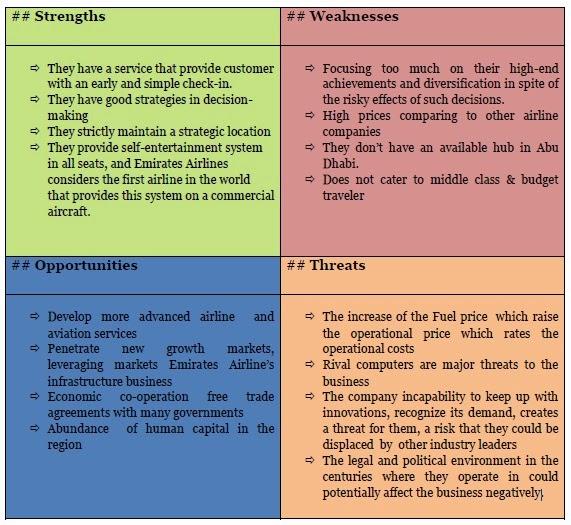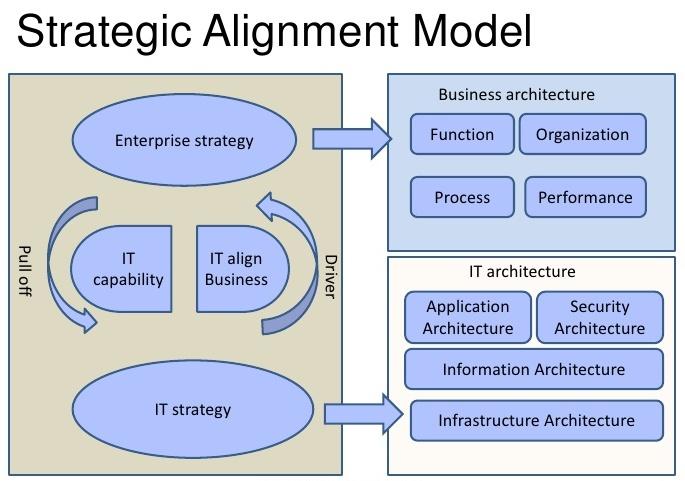Introduction and Future Strategy
Emirates Airlines is one of the leading carriers in the United Arab Emirates (UAE). Statistics indicated that ‘the airline operates a total of 3,300 flights every week to different parts of the globe’ (Emirates Airlines 2016, para. 3). It also transports thousands of passengers to around 80 nations across the globe (Emirates Airlines 2016). The firm uses the best business strategies to attract more passengers.
Emirates Airlines is a leading employer with over fifty thousand employees from diverse cultural backgrounds. The company is revered by many people because of its sustainable business model. The business model has also been responsible for the airline’s positive performance (Nataraja & Al-Aali 2011). However, new challenges encountered in the aviation industry might affect Emirates Airlines in the coming years.
For instance, competitors such as Qatar Airways, EgyptAir, and British Airways are posing a major challenge to this company. Global tourism has also become a major force in the recent past. These leading companies focus on these changes to emerge successfully. The concept of hospitality management has been ‘taken a notch higher by many competitors in the aviation industry’ (Smith 2010, p. 63). Emirates Airlines must, therefore, embrace new strategies to increase its competitive edge. The strategies presented below can help Emirates Airlines maintain its competitiveness in the aviation industry.
Recommended Strategy
Analysis of the Company’s SWOT
The SWOT Analysis is a powerful model that makes it easier for an organization to identify the major opportunities challenges affecting business performance. Emirates Airlines’ SWOT shows that it commands a lead in the global aviation industry. The company’s excellent business model supports its goals (Appendix 1). As well, issues such as terrorism and competition affect its performance.
The number of opportunities experienced in the industry can also be tapped to make the firm more profitable. The emerging tourist destinations in different parts of the globe should be targeted by the airline company (Johansson 2011). By so doing, the firm will attract more potential customers and transport them to these destinations. As well, the company should use modern innovations to add value to its esteemed customers. This move will make it easier for Emirates Airlines to address the problem of competition. The firm will also attract more potential customers from different parts of the globe.
Improved Hospitality Practices
Hospitality management has emerged as a powerful practice that delivers quality services to every targeted client. Many players and firms in the hospitality industry have outlined a wide range of practices that have the potential to add value to more customers. A ‘satisfied customer is always ready to do repeat-business’ (Ladki & Misk 2009, p. 5). That being the case, the aviation industry has been borrowing numerous ideas from the hospitality sector. Emirates Airlines has been providing quality customer services to its increasing number of global passengers. However, the level of competition has increased significantly in the industry.
Emirates Airlines can use the best approaches to improve its hospitality practices. By so doing, the airline company will provide quality support to its customers (Gobe 2010). The passengers should also be supported by air hostesses who can offer culturally-competent services. The level of comfort should also be increased in an attempt to attract more customers.
Modern Technological Innovations to Improve Hospitality
Many players in the global aviation sector are using new technologies to improve the quality of services delivered to different passengers. Many companies have been using modern innovations to support the emerging needs of more customers (Bolotaeva & Cata 2011). Emirates Airlines should, therefore, embrace these strategies if it has to achieve its business potentials. The company uses technology to improve flight bookings and payments.
However, it can also improve its offerings in an attempt to offer better hospitality services (Shaw 2014). For instance, the aircraft can be equipped with both 3G and 4G network technologies. Every passenger can also be provided with handheld devices to monitor his or her luggage. The devices can also be used for social networking and entertainment.
Passengers can also use gadgets to communicate with different members of staff. The devices can also be used to monitor the experiences and complaints of different passengers. Modern technologies can also be used to promote various loyalty programs and rewards (Pantelidis 2014). More customers will be willing to use the airline’s services to increase their rewards. The company can also use modern technologies to improve patient safety and comfort. The targeted passengers will be happy to be associated with the brand. These measures will eventually make the airline company successful.
New Tourist Destinations
Emirates Airlines mainly targets specified markets in the developed world (Emirates Airlines 2016). This means that it transports its passengers to different regions such as Europe, far-Asia, and the Americas. Experts in the aviation industry have shown clearly that some of the emerging markets in different parts of the world have the potential to support the performance of many airline companies. Many countries in Latin America, Asia, the European Union (EU), and Africa have the potential to make Emirates Airlines (Crotts, Buhalis & March 2000). As well, these nations have unique tourist attractions that are admired by many people across the globe.
That being the case, Emirates Airlines can redesign its business model to target more destinations. By so doing, the firm will attract more passengers and eventually realize its business goals. The company should also support this strategy with adequate prices (Papatheodorou 2016). The pricing strategy should be informed by the approaches embraced by some of the leading and local carriers. A competitive pricing strategy will make it easier for the firm to attract more passengers and eventually realize its business objectives.
Review of the Strategy
The above strategy has the potential to transform the performance of Emirates Airlines. The current global passenger is focusing on new destinations in different parts of the world. The four strategies presented above have the potential to make a difference for this firm. The company’s SWOT Analysis can outline various strategies that can add value to more passengers. The SWOT will also identify the most appropriate business practices (Lamp, Hair & McDaniel 2014).
The organizational culture associated with the firm will also support the use of modern innovations and technologies. The company can consider the specific needs of different customers in the world (Shallal 2011). This knowledge will then be used to identify the most desirable options. New hospitality practices and tourist destinations will also be identified (Nhuta 2012). By so doing, the company will eventually achieve its potentials.
Effective Implementation Approach
The implemented process will be guided by the Strategic Alignment Framework (SAF) model. The managers at the firm will use the current business model to identify the best IT strategy that can deliver the best practices (Appendix 2). New information systems will be implemented throughout the process. The organizational culture embraced at the company will play a positive role in supporting every new hospitality practice (Wiley 2007).
The changes experienced in different hospitality industries will be reexamined to come up with the best suggestions. The workers will also be trained and equipped with the most appropriate resources. The company should also employ a competent supervisor to monitor the success and effectiveness of the implemented strategy (Nataraja & Al-Aali 2011). The feedbacks collected from different workers and passengers will be used to make the necessary strategic improvements (Karadeniz 2009). These strategies will make sure Emirates Airlines is on the right path towards realizing their goals.
Conclusions and Recommendations
The business performance of Emirates Airlines should be sustainable and profitable. However, competition remains a major challenge in the aviation industry. A proper focus on the changing needs of the global passenger will make it easier for Emirates Airlines to improve its offerings. A strategic focus on hospitality management will deliver quality services to more passengers. The use of modern technological applications and innovations can also add value to the company.
The company should also identify new destinations especially in various underserved regions across the globe. The company’s top management should continue to embrace new ideas that can promote the level of performance (Knorr & Eisenkopf 2007). Such measures will ensure Emirates Airlines is prepared for the uncertain future.
List of References
Bolotaeva, V & Cata, T 2011, ‘Marketing opportunities with social networks’, Journal of Internet Social Networking and Virtual Communities, vol. 1, no. 1, pp. 1-13.
Crotts, J, Buhalis, D & March, R 2000, ‘Introduction: global alliances in tourism and hospitality management’, The Haworth, vol. 1, no. 1, pp. 1-10.
Emirates Airlines. 2016.
Gobe, M 2010, Emotional Branding: The new paradigm, Prentice Hall, New Jersey.
Johansson, K 2011, Global Marketing, Pearson Books, New York.
Karadeniz, M 2009, ‘Product positioning strategy in marketing management’, Journal of Naval Science and Engineering, vol. 5, no. 2, pp. 98-110.
Knorr, A & Eisenkopf, A 2007, ‘How sustainable is Emirates’ business model’, Airlines Magazine, vol. 38, no. 1, pp. 1-4.
Ladki, S & Misk, A 2009, ‘Airlines competition in the gulf: a competitive advantage’, International Journal of Business Strategy, vol. 9, no. 1, pp. 1-12.
Lamp, C, Hair, J & McDaniel, C 2014, MKTG: Principles of Marketing, Cengage Learning, Cengage.
Nataraja, S & Al-Aali, A 2011, ‘The Exceptional Performance Strategies of Emirate Airline’, Competitiveness Review: An International Business Journal, vol. 21, no. 5, pp. 471-486.
Nhuta, S 2012, ‘An analysis of the forces that determine the competitive intensity in the airline industry and the implications for strategy’, IJPSS, vol. 2, no. 9, pp. 433-469.
Pantelidis, I 2014, The Routledge Handbook of Hospitality Management, Routledge, New York.
Papatheodorou, A 2016, Aviation and Tourism: Implications for Leisure Travel, Routledge, New York.
Shallal, M 2011, ‘Job satisfaction among women in the United Arab Emirates’, Journal of International Women’s Studies, vol. 12, no. 3, pp. 114-134.
Shaw, S 2014, Airline Marketing and Management, Ashgate Publishing, Burlington.
Smith, D 2010, Exploring Innovation, McGraw Hill, New York.
Wiley, C 2007, ‘What motivates employees according to over 40 years of Motivation surveys’, International Journal of Manpower, vol. 18, no. 3, pp. 264-280.
Appendices
Appendix 1

Appendix 2

